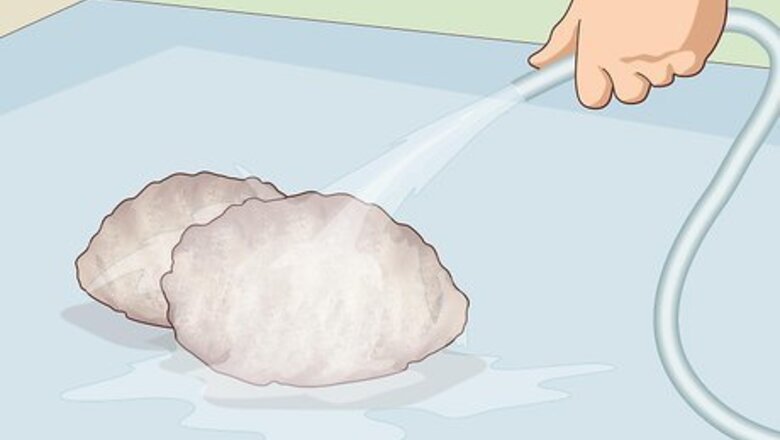
views
Cleaning Your Abalone Shells
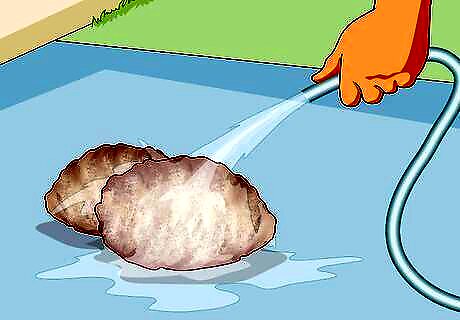
Rinse and dry the shells for a few days to clean them off. Take your freshly caught shells and set them outside. Use a garden hose to rinse off any visible slime and muck from the surface of your shells so they don’t start to smell later on. Once your shells are clean, place them on a flat surface where they can get a lot of direct sunlight. Let them sit for a few days so they can completely dry off. If you didn’t catch the shells and they’re already clean and dry, you don’t need to worry about this. The main purpose of rinsing and washing fresh abalone shells is to clear away any slime and muck.

Wear gloves, safety glasses, and a respirator to protect yourself. Slip on some old clothes and rubber gloves so you don’t get super dirty. To prevent yourself from breathing in any harmful particles, wear a respirator or dust mask that filters the air you breathe in. As a final precaution, wear some safety glasses to protect your eyes from any flying debris. You can find these safety supplies online or at a hardware store. Abalone dust can cause permanent damage to your lungs, so you don’t want to breathe it in!

Place the shell under running water. Arrange your shell on a plate or in a basin, then set a running hose nearby. Try to soak the entire abalone so it’s easier to clean off.
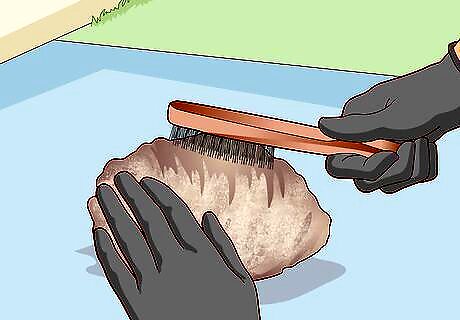
Use a wire brush to scrub down the shell. Take a small wire brush and work at the sections of build-up on top of the shell. Move the brush in short, quick motions so you can have more luck removing pieces of debris from the surface. You’ll need to apply a lot of pressure to clean off the surface of your shells. Don’t be discouraged if you don’t see progress right away!
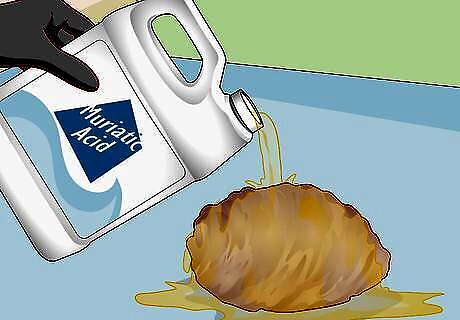
Pour muriatic acid over the surface of the shell. Find a flat, outdoor area that’s several yards or meters away from your home. Place the abalone shell on a flat surface like asphalt or soil, then pour enough muriatic acid to cover the surface of the shell. Don’t be alarmed if the acid foams—this is normal, and means that the acid is doing its job. Muriatic acid will eat through the build-up and deposits on the shell, leaving you with a much cleaner surface. Unfortunately, it’s pretty corrosive so you don’t want to get it on your skin and clothes. You can find this acid at most hardware stores. Be sure to wear close-toed shoes as you work, like rubber boots.Tip: If you don’t have muriatic acid on hand, you can also use a handheld cutting wheel to smooth out the surface of the shell. Be sure to wear protective gear when using this tool, as well!
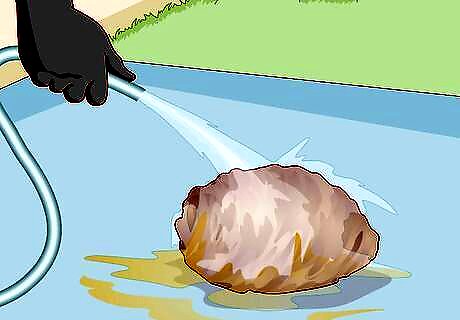
Rinse off the acid after a few seconds. Take a garden hose and splash water over the surface of the shell. Continue rinsing until the acid is diluted and pooling away from the abalone. Don’t pick up or handle the shell until it’s completely clean. When there’s no longer any foam on the surface, your shell should be safe to pick up.

Remove any barnacles or growths with a hammer and pick. Place the abalone on a flat surface and examine it for extra growths or barnacles. Instead of trying to sand away these sections by hand, stick a chisel or pick beneath the edge of the growth instead. Hammer the end of the pick or chisel until the barnacle lifts and detaches from the rest of the shell. Repeat this process as much as you need until the surface is free of any growths. This may be easier to do after you’ve poured muriatic acid over the shell.
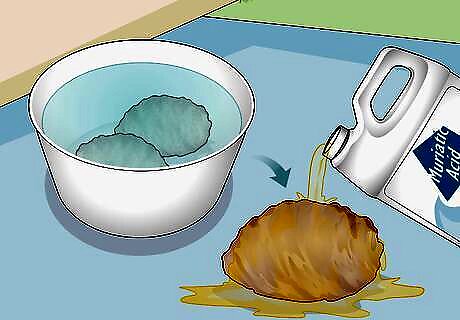
Soak and rinse your shell with muriatic acid again if the surface is still rough. Examine your shell to see if there’s any leftover build-up on the surface. If there are too many deposits to clean off with a wire brush, place the abalone on a flat, isolated surface and soak it with muriatic acid again. As you did before, rinse off the surface of the shell before picking it up again. You only need to leave the acid on the shell for a few seconds.
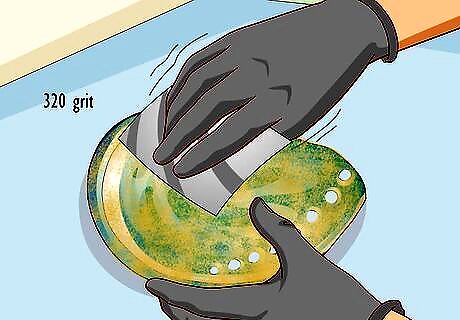
Buff off the inside of the shell with 320-grit sandpaper. Place the shell under running water, then flip it over so the inner portion is visible. Use a piece of fine sandpaper to buff the surface and make it smooth. If your shell is especially rough, use a piece of coarse-grit sandpaper before switching to the 320-grit.
Polishing the Surface of the Shell
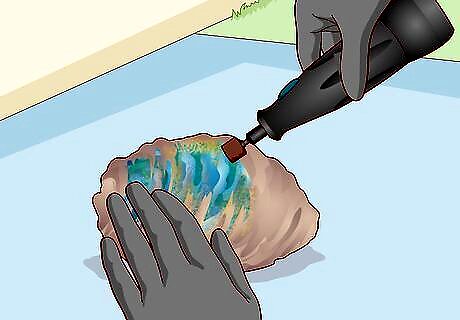
Rub down the outer shell with a handheld drum sander if the surface is still rough. Look over the surface of the shell to search for deposits and other build-up. If your shell is still looking worse for wear, attach a coarse-grit bit to a handheld drum sander and work your way around the shell. Start along the edges of the abalone before working your way to the surface. If the surface of your shell is mostly smooth from the cleaning process, then you don’t have to worry about this. You can also use fine-grit bits to buff out the surface of your shell, like 120-grit or so. If your shell is in really bad shape, consider using something coarse, like 60- or 80-grit. Focus on sanding and polishing the section of the shell that will be on display, like the outside.Warning: Be sure to continue using a respirator, safety glasses, and gloves for this!
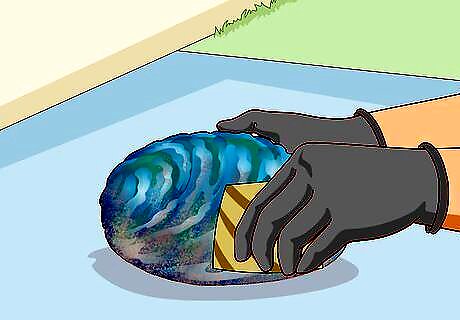
Buff the surface by hand sanding with coarse and smooth sandpaper grits. Soak a sheet of sandpaper in a bowl of water, then rub over the entire surface of the shell. Start with 60- and 80-grit paper, then gradually work your way up to 100-grit, 120-grit, and other smooth sandpapers. Use the different levels of coarseness to buff your abalone and make it smooth to the touch. Wet sanding makes the polishing process a lot easier.
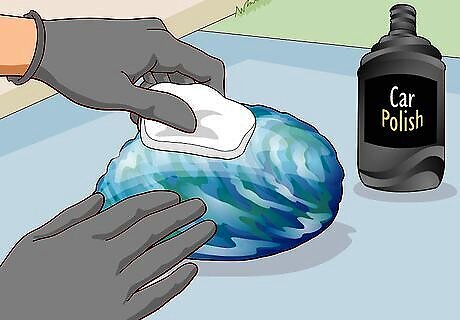
Rub car polish into the surface of the shell for a simple solution. Pour a blueberry-sized amount of car polish onto a soft cloth. Polish the surface of the shell in short, circular motion, taking care to cover the entire shell. Continue applying the polish until the whole shell has a nice sheen. You can purchase car polish online or in most auto supply shops.
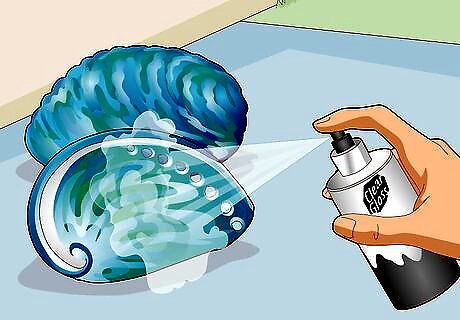
Spray the shell with a clear gloss if you don’t have any car polish. Place your smooth abalone shell in a flat, open area, like your yard. Spritz an even coat of gloss over the surface of your shell, then follow the recommended drying time provided on the label. Once the shell is dry, feel free to use it as a decoration or centerpiece in your home!

















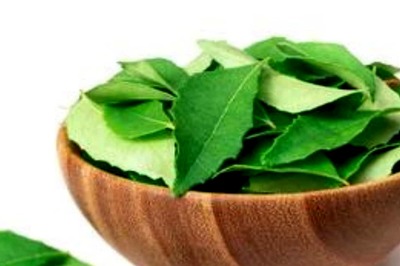


Comments
0 comment